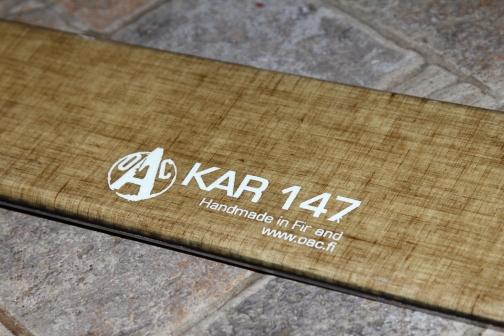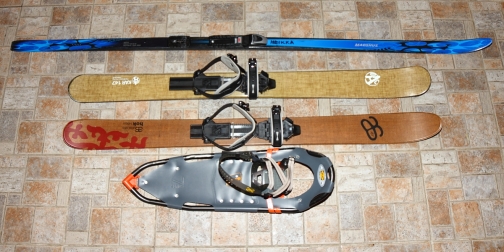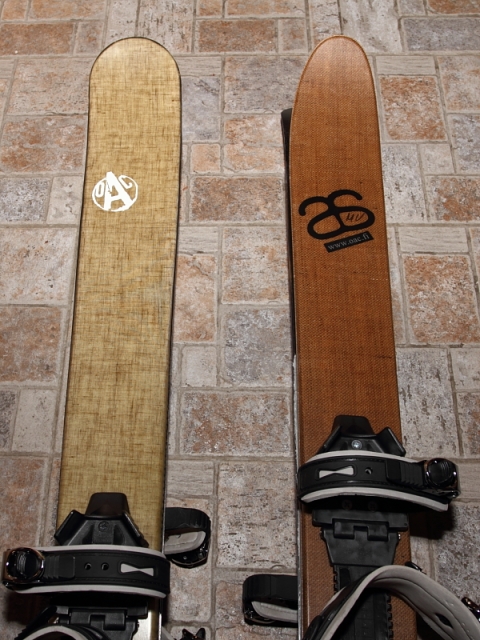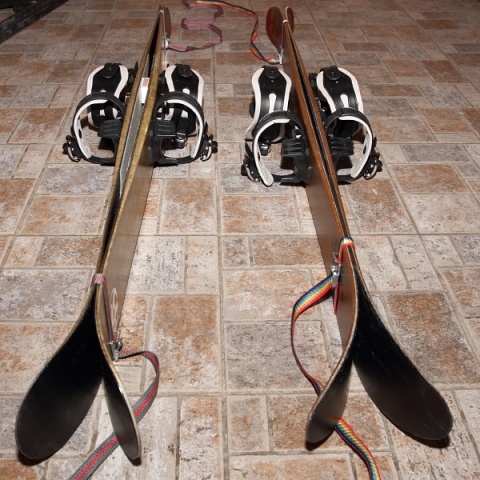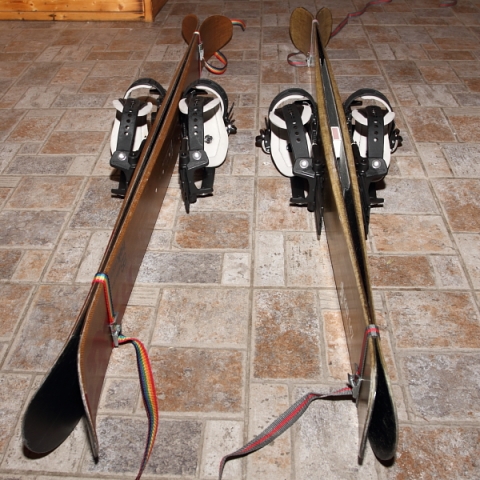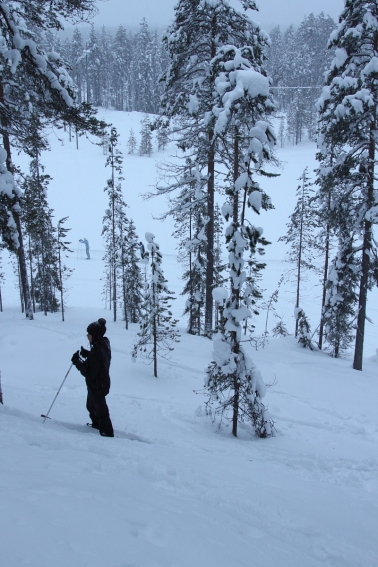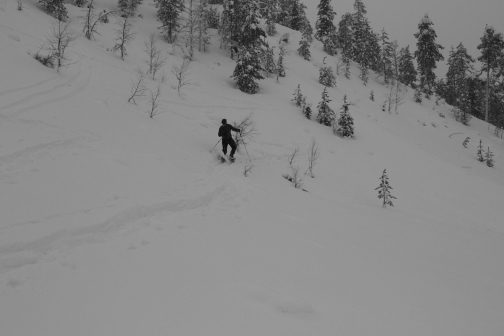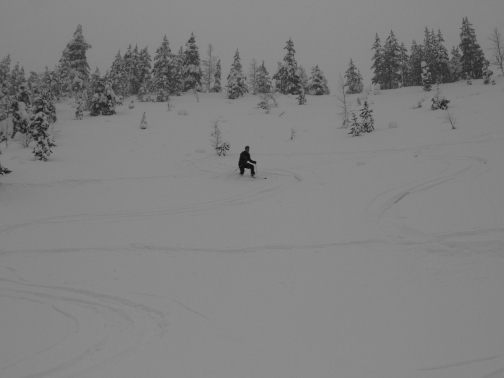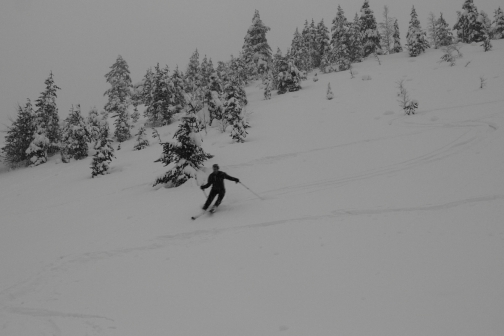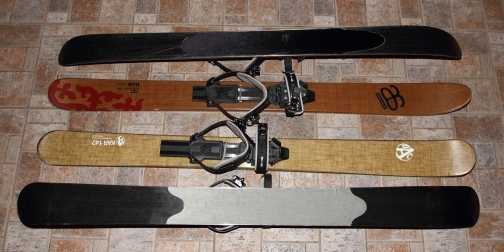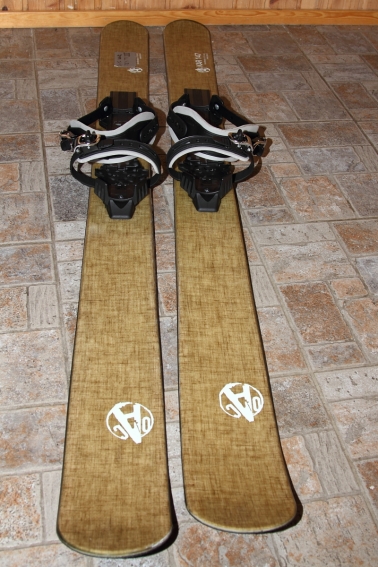“Monthly highlights” is a series of post concentrating on a 10-month wilderness guide course I am taking this year at Niittylahden opisto near Joensuu in Eastern Finland. These posts try to summarize the best parts of each month and are naturally published at the end of each month (or few weeks after…) Hopefully you enjoy it!
The lesser highlights of January: snowmobile course and hare hunting
The school started in the mid January after a six-week internship period (of which I spent four weeks at a small husky farm at Taivalkoski). The first week was filled with entrepreneurship lectures and exercises in the classroom that didn’t get especially good participation. On the second week we had two days snowmobile course in Nurmes but as I see snowmobiles as tools and don’t support leisure driving and the course wasn’t especially good either, it didn’t make it to the highlights of the month. The course was more like a short snowmobile safari followed with a longer safari with no special emphasis on teaching how to use the snowmobile as an efficient tool in different situations. But after the snowmobile course things got better…

Early start for the longer snowmobile safari.
The snowmobile course was followed with a hunting course that gave enough the information to participate to a Finnish hunting license test on the following week. But as I already had a hunting license I was just hanging on the lectures and learning some new things and recalling a lot of things I had already forgotten as I haven’t been actively hunting. The information about animals and legislation was very useful even if one is not intending to get the hunting licence. On Friday, at the end of the course, we went for a hunting trip to hunt some hares. Our teacher, few local hunters and one of the students were equipped with shotguns while the rest of us skied through forested areas driving the hares out of their hideouts. We didn’t get any hares from the first three drives but from the fourth one we got two big European hares. We disemboweled the hares on spot, skinned them on the following week, put the meat into freezer and prepared a tasty dinner later.

Our teacher returning with the first European hare.

Preparing dinner...
The highest highlight of January: My coldest trip yet
On the last week of January we were to have a four-day hike in the woods. The hike or course is known as “Talvierätaidot” meaning winter wilderness skills and concentrates on hiking in forested areas in winter. I was very excited when the meteorologists were forecasting temps below -30 C. Then it changed to much milder but luckily it changed back to even colder just before the trip. And cold weather was what we got!

The hike took place near Patvinsuo National Park near the Eastern border of Finland. To be able to build fires (which are big and important part of the Finnish hiking and wilderness tradition) we didn’t camp in the national park but did a round trip from the North-Western edge of the national park. The plan was to ski a little bit every day and spend most of the time in camp concentrating on surviving in the cold and having good time. We skied about 2-3 hours every day covering about 3-5 km in the soft snow and occasionally dense woods. Everyone was hauling a sled and everyone else was skiing with traditional Finnish “metsäsukset” (I was using the Altai Hok 125 fastshoes).


We started the trip with sun shine, blue skies and relatively mild temperature of -24 C or so. After few hours of easy skiing we got to our planned camp spot on a small lake. The first night was to be spent in tents. Most of the people pitched their tents on the ridge as the air up there is slightly warmer because of inversion. Me and my buddy T pitched our tent on the lake ice to get most out of the cold weather as the first night was forecasted to be the coldest night. Most of the people spend their time sitting and cooking by fires while me and T spent most of our time in my Hilleberg Keron 3 GT warmed with white gas stoves in the expedition style. We had hearty dinner followed with some Ben&Jerrys icecream and generally had good time. Surviving in the cold is easy with the right kind of equipment. We also participated in fire wood gathering and hanged out with the other people before retiring to our sleeping bags. While going to sleep the temperature was already below -36 C on the lake ice and -32 C up on the ridge. To make most out of the cold we opened all the tent doors making it effectively only a tarp. During the night I woke up being uncomfortably warm and sweaty and decided to check the thermometer which was showing -38,5 C! I removed two pairs of woollen socks and went back to sleep.


We woke up at 07:00 and started the stoves to get the tent warm. I had a little problem with the pump of a MSR XGK as it was too cold for the standard O-rings (they fail around -40 C) but I got the other stove (MSR Dragonfly) running without pumping and when the tent warmed up the other pump stopped leaking and we got on with our morning chores. It also became obvious that in temperatures near -40 C you can’t work for long periods in thin fleece gloves. Morning chores outside were executed in 30 second intervals of working nad then warming fingers on the neck or groin. After breakfast we got news that two students were to be evacuated because of the cold (no cold damage and we would stay in the camp untill noon. After the two students were evacuated from the road side we continued with a short skiing with sun and -25 C or so. The second night was to be spent under tarps by a fire so we pitched our 3×3 m Erätoveri tarp and found a good place for fire with plenty of firewood available nearby. During the evening the thermometer crawled back towards -30 C and below. We made a big pot of popcorn to share with the group and went to sleep after some chatting by the fire.


In the morning we got the fire going ans started to prepare breakfast in -32 C. Me and T were acting as the day’s guides with me orienteering in the front and T skiing last checking that everyone stays with us. We departed from the camp a bit after 09:00 and saw fresh wolverine tracks just after few hundred meters of skiing. It’s a wild place! Maybe it was bad navigation or just simply bad terrain but the terrain was occasionally challenging until we arrived to snow-covered gravel road and as the hares and moose were also using the road, so did we. We continued along the road to a sunny lake ice were we had lunch break in relative warmth of about -24 C before crossing the little lake to our next camp.

In the camp we piled snow for quenzees and while the snow settled we learned to make a fire from fresh birch. This was new to me and though I knew the technique in theory it was nice to see that it worked also in real life. it’s good to know that usually when you make fire you’ll get warm: you walk around in snow gathering and chopping fire wood and then you get a big nice fire. You stay warm during the whole process. When making a fire from fresh birch you sit on your butt snapping and sorting little twigs and in the end you have a smoking and hissing pile of twigs that can boil water… But it works!



After the fire making exercise we gathered some first class fire wood for a proper fire, carved the quenzees, had dinner and made some improvised brownies on frying pan. I walked to the lake ice to admire maybe one of the best full moons I’ve ever seen. Standing there alone in the bright moonlight breathing crisp cold air under the starry sky was quite an experience! Then it was time to retire to the quenzee for the night. Inside me and T had cups of tea and ate the rest of the ice cream. Outside the temperature was once again plummeting below -30 C but the inside temperature was around – 10 C meaning that it was nice and warm.
We had decided that we’d make the breakfast inside the quenzee instead of getting out and making a fire. After good nights sleep we punched a hole to the side wall and placed the roaring MSR stoves under it and prepared breakfast. Not very smart if you’re going to use the quenzee for several nights but in this case with cold outside temperatures it was a good move in my opinion. After packing all gear we tested the durability of our quenzees. The roof hold over 100 kg weighting T easily. He went through the roof on his first jump but only made a whole to the roof and was not able to collapse the thing.



After playing destruction derby on our shelters we started the last short skiing session back towards the road and the cars. We ended up in some pretty fucked terrain with dense woods and little rocky cliffs, generally a bad place to be with a pulka. The progress was so slow that my toes got cold despite wearing Sorel Caribou boots and I didn’t get them warm until we got on easier ground and I got to ski in the point with good pace.

When we arrived to the cars everyone was probably very warm but the cars were not. It took some time to charge the car batteries and warm the cars with a generator we had with us but after an hour or so we got both cars running and headed back to civilization. It was my coldest trip yet but very enjoyable none the less. I would have liked a bit more skiing but who cares when you have great weather and beauty of nature surrounding you.


Few words on gear
For this trip I had mostly my typical tried and true winter kit. It was mostly the same stuff that I had for the Ultima Thule 2011 expedition. Few things were different or performed differently so here are couple word about them:
For the whole trip I wore military surplus synthetic fill puffy bib pants instead of the typical Goretex. They worked very well: warm enough for the camp and not too warm for the short daily transitions because of good ventilation options. And I started to think if a synthetic buffy overall with good venting options, good hood and a drop seat would actually be near the optimal shell clothing for this type of trips…
I was using the Altai Hok 125 short skis, or fast shoes, instead of the 2,5 meter long traditional Finnish “eräsukset”. The Hoks were a lot more maneuverable and doubled also as snowshoes in camp but they were slower on easy ground. More of my initial impression here.
Because of the X-Trace universal binding I could use my Sorel Caribous, the warmest footwear I own but even they were not warm enough towards the end of the trip when energy levels were low and progress was slow. They also caused small blisters to my heels. The good thing is that they doubled also as camp shoes. Maybe I should have tested vapour barrier socks with them.
The 168 cm long Fjellpulken pulka was a bit of a trouble in the dense woods just as I had expected. Probably the optimal system for long trips in dense woods would be the Altai Hoks (145cm long ones for soft snow), a small pulka with crossing shafts (or an incredible rulk?) and a small backpack if more capacity is needed.
Just before the trip I had changed my incredibly warm Cumulus Alaska 1300 based down bag to lighter Marmot Couloir bag. I wasn’t sure if it would be enough when combined with my Carinthia Explorer Top MF XL synthetic topbag but the combination was easily warm enough down to the -39 C we had. But because of changing to thinner sleeping bag the 10 mm CCF and regular Ridgerest combination wasn’t warm enough anymore and I had to use my puffy pants as an extra insulation between the pads though that wasn’t a problem when recognized and fixed.
Even though sitting by a fire in the middle of a silent forest lighten up by the pale moonlight is an incredible experience, I prefer the expedition style warmed tent in harsh winter conditions. Nothing prevents you from sitting by the fire even when hauling the tent and stove with you but having them makes life a lot easier. And for prolonged trips and expeditions in challenging winter conditions I see it as the best way to go. Not ultralight but ultra-well-working.
Technique regarding snow shelters
I have few posts about building snow shelter from the last winter. They seem to have quite some typos and the series is still missing the posts about building a snow cave (the superior snow shelter if snow conditions are favourable) and an igloo. The posts seem to be full of typos and I’m planning to polish them at some point when completing the series. But as I consider snow shelter building as an essential winter skill (and training it to be a lot of fun!) I’d recommend checking them anyway before I get them polished for “re-blogging”.
– For fun and safety
– Quenzees
– Simple emergency shelter
Please, share your experiences and ideas about snow shelters! I’m very interested in the topic, especially about experiences about building an igloo (not the one with the box-tool but cutting the block from hard snow).
– – –
There are no overnight trips or hikes for February but we already had a nice animal tracking trip in school and we will be doing some winter fishing on the next week which should be interesting… I’ve been quite busy with the preparations for the Vatnajökull expedition and by working hard you get results so things are looking quite good. But there might be some quiet time in the blog because of preparations and upcoming exams. Hopefully you’ll tolerate it and I can make it up later with nice photos from the Europe’s biggest glacier.
Jaakko Heikka - Professional wilderness guide and diehard outdoor enthusiast with a special interest for lightweight backpacking, arctic expeditions and outdoor photography.
